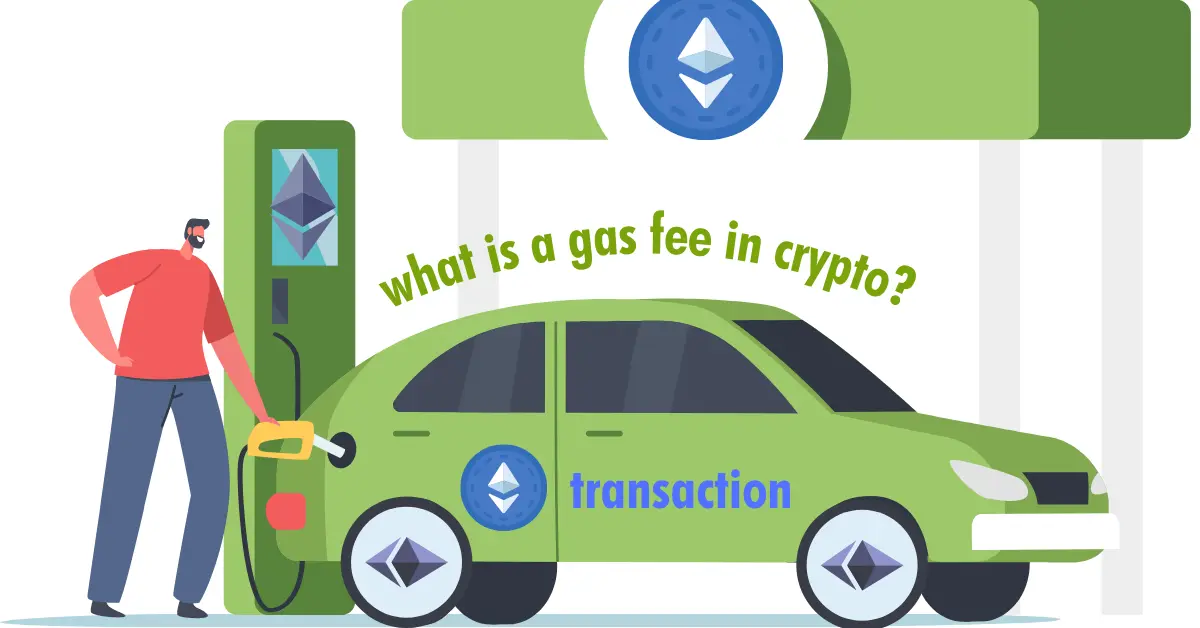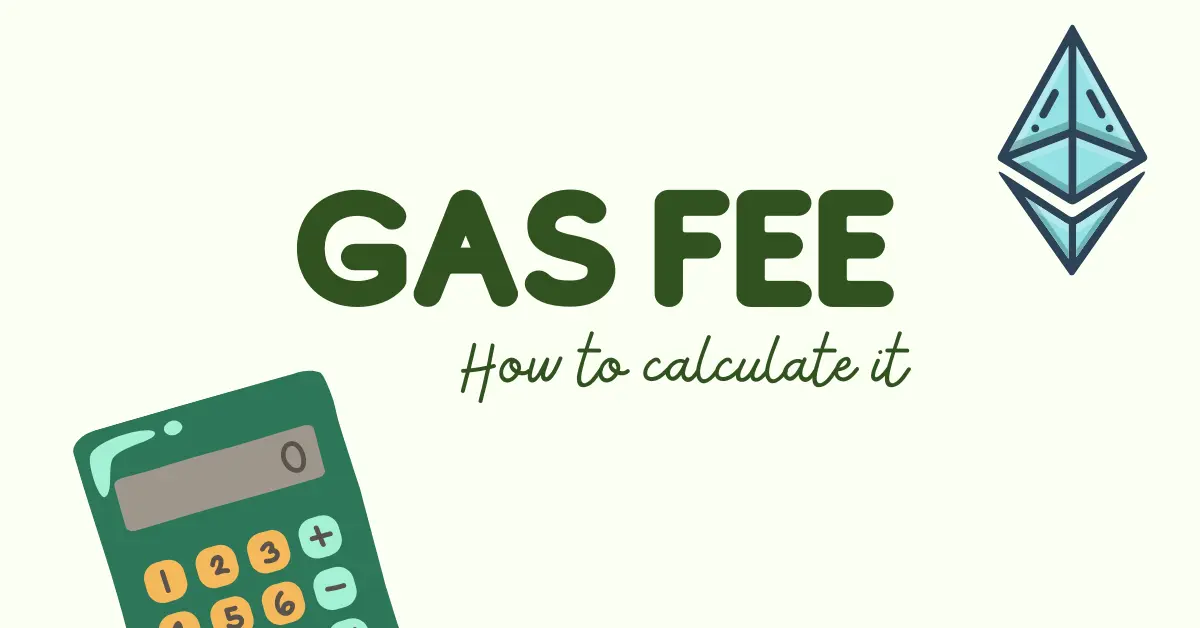What Is Gas in Cryptocurrency? Gas Fees Explained
What is gas in crypto? The terms ‘gas’ and “gas fees” were introduced on the Ethereum network as the cost of validating transactions. Read more!

What is gas in crypto? The terms ‘gas’ and “gas fees” were introduced on the Ethereum network as a measure of the cost of validating transactions. These transactions include crypto swaps, exchanges, trading, and crypto transfers, among many others. The gas concept helped to distinguish between the actual value of the ETH crypto and the cost of computational power used to validate transactions on the Ethereum blockchain. Over time, gas fees in crypto have become a synonym for network fees charged to users to validate transactions on other blockchains.
On March 14th, 2021, Business Insider Africa reported on a user named Martin who bought an NTF worth $30 on Rarible (an Ethereum-based digital assets marketplace). Martin was surprised when he ended up parting with an extra $200 in gas fees. More than six times what the NFT was worth. It sounds outrageous, right?!
Read also: Rarible vs Opensea: What’s the Best NFT Marketplace for You?
So what is gas in crypto? What does gas mean? Why do you have to part with tens and sometimes even hundreds of dollars for a small, single transaction? Is it worth it? And is there a way around it?
Read on to find out “what is gas in crypto?”, how gas fees in crypto work, and how to save your hard-earned money when carrying out crypto transactions.
TABLE OF CONTENTS
- What is gas in cryptocurrency?
- How transactions are verified on blockchains
- What is gas in Ethereum?
- How to calculate crypto gas fees on a blockchain?
- What are crypto gas limits?
- What is а crypto gas price?
- Crypto gas limits vs. gas prices
- How can you pay less in crypto gas fees?
- Combine related transactions
- Watch out for times when network activity is low/uncongested
- Estimate enough gas to avoid running out
- Go for the slow transaction option for non-urgent transactions
- Move your transactions to a sidechain/layer 2 protocol
- Use tokenized gas
- Choose DeFi platforms that let you carry out internal transactions with 0 transaction fees
What is gas in cryptocurrency?
What is gas in crypto? Simply put, gas is the computing power needed to validate a particular transaction on Ethereum. On other blockchains like Bitcoin, gas is referred to as “network fees”.
Ethereum happens to be the most popular and widely-used blockchain in the market, hosting over 3500 DApps (decentralized applications), 4X the number of DApps on most other blockchains. Most developers prefer to build their projects on Ethereum because it is feature-rich and easy to use.
While Ethereum is no longer a proof-of-work blockchain, now having converted to proof-of-stake. It still needs to validate every transaction. You, the user, must pay for this power in the form of gas or network fees.
How transactions are verified on blockchains
There are two main methods of validation on a blockchain: Proof of Work (PoW) and Proof of Stake (PoS) mechanisms.
PoW blockchains refer to networks where transactions are validated by complex computations from miners. These computations require lots of electricity which leads to higher gas fees. Bitcoin falls under PoW blockchains.
In PoS blockchains, validators earn the right to validate transactions and earn interest from network fees based on the value of crypto they have locked up (staked) in the network. Since PoS blockchains do not require large amounts of energy to approve transactions, users pay fewer network fees. Examples of PoS networks in addition to Ethereum are Cardano and Cosmos.
What is gas in Ethereum?
What is gas in crypto? Since Ethereum is a PoS blockchain, validators earn gas fees by validating transactions.
Gas is measured in Gwei which is another word for a unit of about 0.000000001 ETH. Similar to comparing dollars to cents, but on a different scale.
While gas is a term specific to the Ethereum network, today, ‘crypto gas fees’ have become a synonym for network fees on other blockchains.
How to calculate crypto gas fees on a blockchain

Now you know “What is gas in crypto?”, you will incur network fees for every transaction you need to carry out on a blockchain.
Transactions include examples like:
- Depositing and withdrawing crypto from an online account.
- Transferring crypto from one wallet to another.
- Crypto trades and exchanges.
Gas fees depend on two factors:
- The size of your transaction or any other factors that could make the transaction use more network resources. Fees are lower for less complex transactions.
- The number of transactions waiting to be validated on the network (network congestion). Fees are lower in networks with less congestion.
DeFi projects built on the Ethereum network often suffer from insanely high gas fees (as with Rarible.) This is because the Ethereum network already has a congestion problem.
What are crypto gas limits?
A gas limit is the maximum amount of gas (computational power) you are willing to pay to process and validate a particular translation. Ethereum lets you set your preferred gas limit but there’s also a standard gas limit for all ETH transactions which is 21,000 units.
Setting your gas limit is tricky because you need to ensure that you set just the right amount of gas.
If you set a lower gas limit and your gas runs out before validators finish validating your transaction, you cannot recover used gas.
However, if you have set a higher gas limit than you need, you can recover unused gas.
What is a crypto gas price?
Gas price is the price of one unit of gas. One Ethereum, as we mentioned it is measured in Gwei. The price of gas can go up depending on the demand and supply of computational power or congestion on a blockchain. When there’s less demand, prices are lower, and vice versa.
Crypto gas limits vs gas prices
gas fees = gas limit * gas price
Crypto Gas fees also depend on the speed of a transaction
If you want to send Ethereum from one wallet to another, some wallets like MetaMask allow you to choose how fast you want your transaction to be verified.
There are slow, average, fast, and advanced options. Faster transactions attract the highest fees and slow transactions are cheaper. With the advanced option, you get to set your gas fee rather than accept the given options.
How you can pay less in crypto gas fees
Now that you know how gas fees work, how can you ensure that you pay lower fees when you are using a crypto DeFi product? Here are several CryptoFireside smart tips.
Combine related transactions
Carrying out many small transactions means that you have to pay gas fees for every transaction. This may cost you more gas fees. If you wait it out and combine all those small amounts into a lump sum you may save a significant amount on your transactions.
Watch out for times when network activity is low/uncongested
You may save a lot on moving your crypto by rescheduling non-urgent transactions. Network congestion often follows predictable patterns based on the number of crypto users on the network.
To help you know “what is gas in crypto?” and when a network has less traffic, you can check its gas price chart. The Ethereum gas price chart shows less activity and hence lower gas prices (between 89 and 99 Gwei) on Saturday and Sunday at around 09:00 – 10:00 AM ET. These can be good times to transact at lower gas fees.
Estimate enough gas to avoid running out
As discussed earlier, you do not want your gas running out before miners validate your transaction. In these cases, you still pay a fee even though the transaction fails.
Luckily, you can use tools such as Eth Gas Now and ETH’s gas tracker to help you estimate the gas you’ll need for your transaction.
Go for the slow transaction option for non-urgent transactions
Transactions that confirm almost immediately are significantly more expensive than those that take longer. When you can wait, choose the slow option.
Move your transactions to a sidechain/layer 2 protocol
Sidechains are independent blockchains that are compatible with Ethereum (or other underlying blockchains) but employ their own consensus mechanism to validate transactions. That means you can move your crypto to a sidechain to carry out faster and cheaper transactions. When you need to, you can move your crypto back to the original blockchain.
If you’re a developer on Ethereum, you can build your project on more affordable and less-congested developer-targeted sidechains like Polygon or Optimistic Rollups like Optimism and Artbitrum and start compound interest investments.
Use tokenized gas
There’s an emerging concept of letting you save on gas by using ‘tokenized gas.’ This involves buying gas when it is cheap and storing it in the form of tokens. You then deploy it when the prices go up.
Choose DeFi platforms that let you carry out internal transactions with 0 transaction fees
As a crypto user, gas or network fees may not be all you have to deal with.
When you’re carrying out transactions within a DeFi platform, you may also get slapped with internal transaction fees.
To avoid internal transaction fees, choose DeFi platforms that let you carry out 0-cost transactions within their platform.
Want to Keep Reading?
- Regulatory Permissions Could Threaten Crypto Decentralization
- Offshore Crypto Wallet: What the Crypto-Rich Know That You Don't!
- Top 7 Best Crypto Podcasts In 2023
- Cryptocurrency (Everything You SHOULD Know)
Want to know how you can support Crypto Fireside?
Sign up below. It's free, it's easy, and it allows you to comment and join the discussion 🔥
